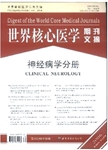MRI和CT检出急性脑出血的比较研究
Comparison of MRI and CT for detection of acute intracerebral hemorrhage作者机构:Washington Hosp. Ctr. Stroke Center East Bldg. 100 Irving St NW Washington DC 20010 United States Dr.
出 版 物:《世界核心医学期刊文摘(神经病学分册)》 (Digest of the World Core Medical Journals:Clinical Neurology)
年 卷 期:2005年第1卷第6期
页 面:1-2页
学科分类:1002[医学-临床医学] 100204[医学-神经病学] 10[医学]
主 题:CT MRI 急性脑卒中 卒中治疗 超急性 缺血性脑梗死 局灶性脑卒中 早期评估 梯度回波 蛛网膜下腔出血
摘 要:Context: Noncontrast computed tomography (CT) is the standard brain imaging study for the initial evaluation of patients with acute stroke symptoms. Multimodal magnetic resonance imaging (MRI) has been proposed as an alternative to CT in the emergency stroke setting. However, the accuracy of MRI relative to CT for the detection of hyperacute intracerebral hemorrhage has not been demonstrated. Objective: To compare the accuracy of MRI and CT for detection of acute intracerebral hemorrhage in patients presenting with acute focal stroke symptoms. Design, Setting, and Patients: A prospective, multicenter study was performed at 2 stroke centers (U- CLA Medical Center and Suburban Hospital, Bethesda, Md), between October 2000 and February 2003. Patients presenting with focal stroke symptoms within 6 hours of onset underwent brain MRI followed by non- contrast CT. Main Outcome Measures: Acute intracerebral hemorrhage and any intracerebral hemorrhage diagnosed on gradient recalled echo (GRE) MRI and CT scans by a consensus of 4 blinded readers. Results: The study was stopped early, after 200 patients were enrolled, when it became apparent at the time of an unplanned interim analysis that MRI was detecting cases of hemorrhagic transformation not detected by CT. For the diagnosis of any hemorrhage, MRI was positive in 71 patients with CT positivein 29 (P .001). For the diagnosis of acute hemorrhage, MRI and CT were equivalent (96% concordance). Acute hemorrhage was diagnosed in 25 patients on both MRI and CT. In 4 other patients, acute hemorrhage was present on MRI but not on the corresponding CT - each of these 4 cases was interpreted as hemorrhagic transformation of an ischemic infarct. In 3 patients, regions interpreted as acute hemorrhage on CT were interpreted as chronic hemorrhage on MRI. In 1 patient, subarachnoid hemorrhage was diagnosed on CT but not on MRI. In 49 patients, chronic hemorrhage, most often microbleeds, was visualized on MRI but not on CT. Conclusion:



